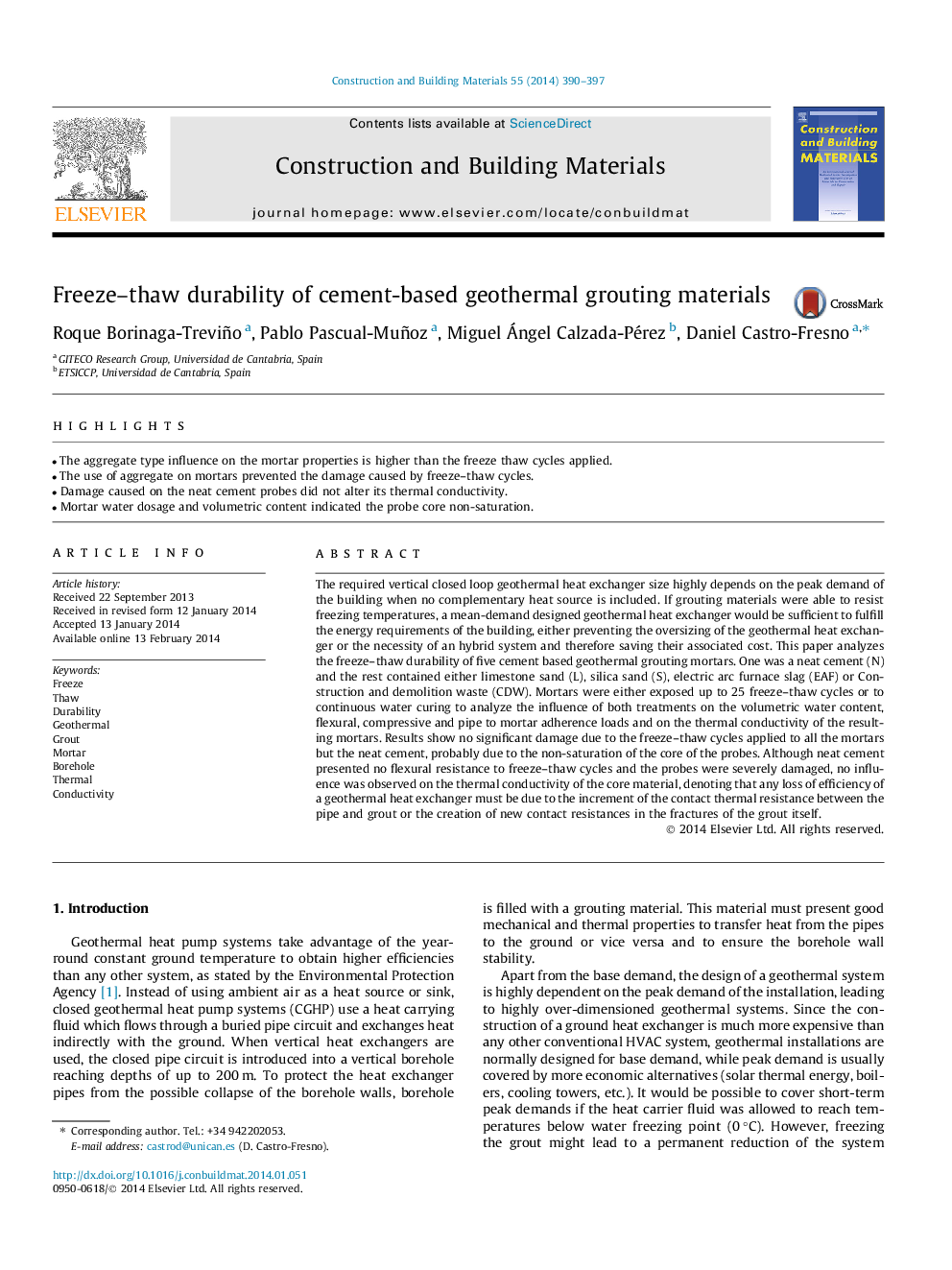| کد مقاله | کد نشریه | سال انتشار | مقاله انگلیسی | نسخه تمام متن |
|---|---|---|---|---|
| 257841 | 503601 | 2014 | 8 صفحه PDF | دانلود رایگان |
• The aggregate type influence on the mortar properties is higher than the freeze thaw cycles applied.
• The use of aggregate on mortars prevented the damage caused by freeze–thaw cycles.
• Damage caused on the neat cement probes did not alter its thermal conductivity.
• Mortar water dosage and volumetric content indicated the probe core non-saturation.
The required vertical closed loop geothermal heat exchanger size highly depends on the peak demand of the building when no complementary heat source is included. If grouting materials were able to resist freezing temperatures, a mean-demand designed geothermal heat exchanger would be sufficient to fulfill the energy requirements of the building, either preventing the oversizing of the geothermal heat exchanger or the necessity of an hybrid system and therefore saving their associated cost. This paper analyzes the freeze–thaw durability of five cement based geothermal grouting mortars. One was a neat cement (N) and the rest contained either limestone sand (L), silica sand (S), electric arc furnace slag (EAF) or Construction and demolition waste (CDW). Mortars were either exposed up to 25 freeze–thaw cycles or to continuous water curing to analyze the influence of both treatments on the volumetric water content, flexural, compressive and pipe to mortar adherence loads and on the thermal conductivity of the resulting mortars. Results show no significant damage due to the freeze–thaw cycles applied to all the mortars but the neat cement, probably due to the non-saturation of the core of the probes. Although neat cement presented no flexural resistance to freeze–thaw cycles and the probes were severely damaged, no influence was observed on the thermal conductivity of the core material, denoting that any loss of efficiency of a geothermal heat exchanger must be due to the increment of the contact thermal resistance between the pipe and grout or the creation of new contact resistances in the fractures of the grout itself.
Journal: Construction and Building Materials - Volume 55, 31 March 2014, Pages 390–397
